Access control is a way of limiting access to a system or to physical or virtual resources. In the fields of physical security and information security, access control (AC) is the selective restriction or control of access to a place or other resource. Access Control could be by physical means e.g. Gates, Turnstile Gate etc or Electronic e.g. Card Readers or Biometric Readers.
Electronic Access control systems perform authorization, identification, authentication, access approval, and accountability of entities through login credentials including passwords, personal identification numbers (PINs), biometric scans, and physical or electronic keys. These solutions integrate a range of electronic access control devices, locks and systems with management tools to help you control who has access to your offices, facilities and operations.
The simplest single-door or entry point access control system includes at least
- an electric strike to automatically unlock the door,
- a timer to make sure that the door does not stay open all day, and
- a bell or light to indicate when the door is opened or that it has not reclosed properly.
In a large-scale security system there may be
- Intrusion alarms,
- Exit alarms,
- Close-circuit surveillance,
- Guards and patrols,
Physical barriers and turnstiles, and a variety of other devices and systems.
The combined advantages of these elements constitute an effective physical security system.
Various access control systems and devices are now available whose combined advantages constitute an effective physical security system.
The functions of the physical access control system within the total security system are in the following phases of the security process
- Deterrence—The visible presence of a card reader or keypad can deter the potential penetrator who is looking for an easily picked lock.
- Prevention—The system will allow the door to be unlocked only for authorized persons.
- Detection—The system will sound an alarm if entry is forced.
- Apprehension—The system can provide a list of suspects if the perpetrator is believed to be an employee of the company.
All access control systems use three basic techniques to control entry through a door viz:
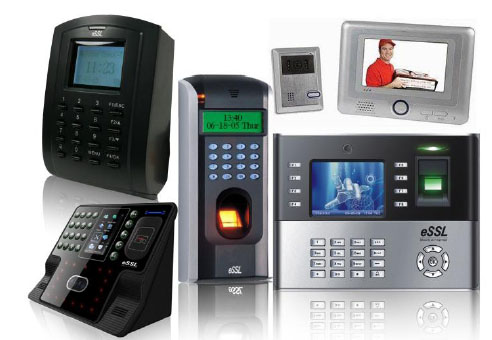
Keypad(Stored Code device) Access Control systems, A stored-code device is an electronic form of combination lock, commonly manifested as a keypad access control system; they require the person desiring entry to depress a correct sequence of numbers on a set of pushbuttons in order to open a door or other mechanism.
Keypad System Options and Features
The standard means of keypad access control for a door consists of the keypad and its electronic controls, connected to an electric door strike. Keypad Systems could be standalone operating a single portal
(Door/Entry Point) using a common code or Networkable and connected to a central control
computer that can control a multiplicity of portals (Doors/Entry Points )and may also provide other sophisticated features
The following features and options are available with keypad access control systems,
- Code storage—The keypad codes can be stored electronically within the control with battery back-up or mechanically e.g by means of jumper wires. such as solid-state memory that is sometimes programmed from
- Master keying—With this option, individual codes are assigned to doors, and a different master code is able to open all doors.
- Individual identification—A separate code number is provided for each person who may access through the portal.
- Logging—An electronic record is kept of the time of all accesses and the identity of each person if the individual identification feature is provided.
- Visitor’s call—A special button may be designated so that persons who do not know the combination may request entry.
- Housings and packaging—Could be attractive indoor units or weatherproof units for outdoor use.
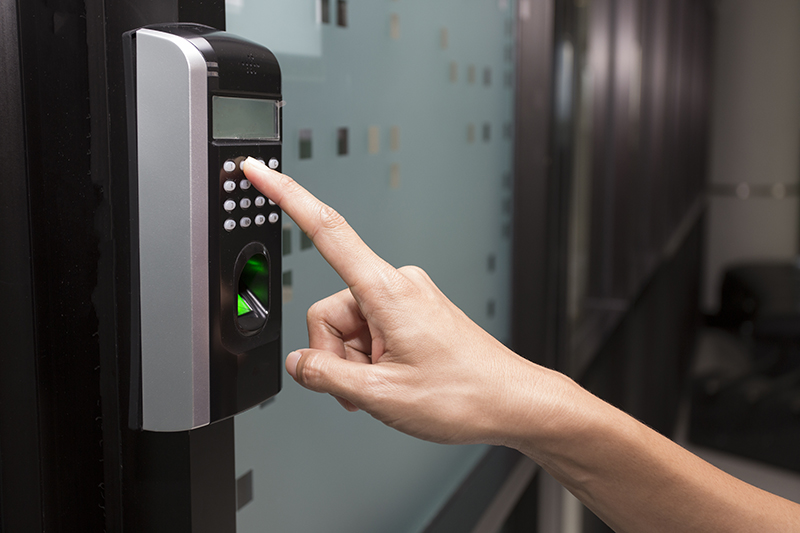
Card Reader (Portable-key) systems.
Portable-key systems commonly take the form of card access, which involves the use of a plastic credit card on which is prerecorded code that is electronically read when the key is inserted into a slot, groove, or hole of a reading unit (Card Reader). A portable-key or Card Reader access control system, therefore, requires the person desiring entry to insert the device (Card) into a reader, and if it contains the code that the electronic controls for the reader require, the portal is unlocked.
The three basic types of card readers, which could indoor or outdoor, are:
- Slot readers—The card is inserted into the reader and removed, sometimes manually
and sometimes using a motorized device.
- Swipe readers—The card is grasped by its top and manually moved through a slot containing the reading mechanism.
- Flat surface reader—The card is placed onto this device for reading.
Like keypads, portable-key access control systems come in both standalone and centrally controlled versions. Standalone portable-key access control systems provide a
self-contained unit at each portal tend to have none or a limited number of sophisticated features such as time-and-day control and individual identification and logging.
In a centrally controlled system, all files of access privileges and identification codes as well as logs of activity are stored in a central computer, and ID and access information is transmitted to and from the card reader at the portal.
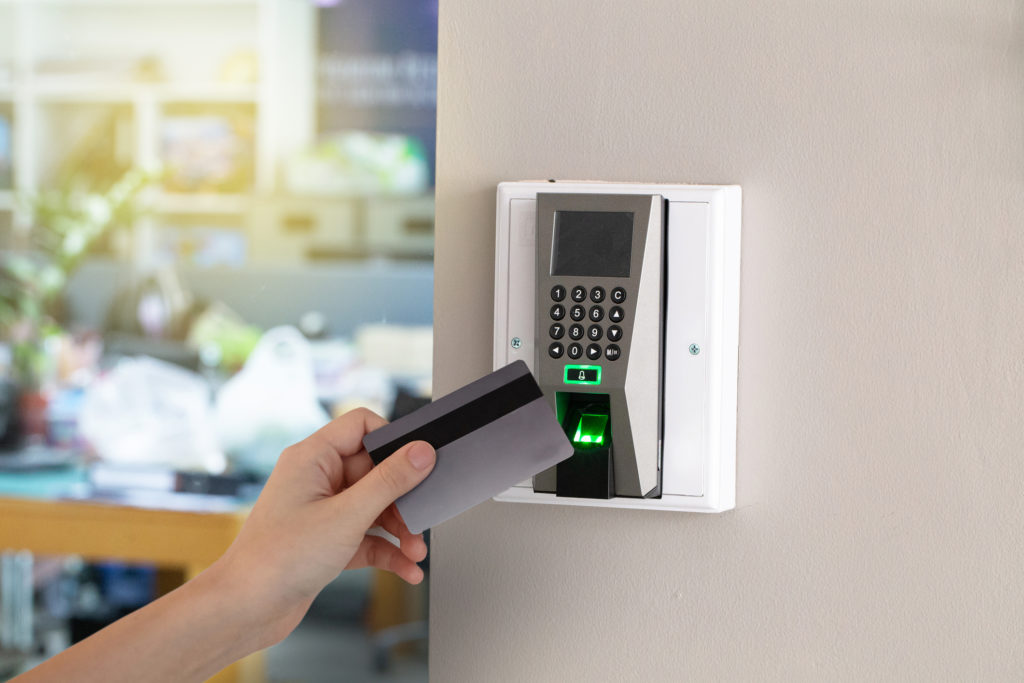
Proximity Access Control Systems
Proximity access control is a form of portable-key system using devices that need not be inserted into a reading mechanism and can be electronically read at distances of up to several hundred feet. Proximity access control systems, therefore, perform the usual function of unlocking a portal using a device(Card) like the portable key but do not require any physical contact between the coded device and the reading mechanism. Some proximity systems operate like card access systems without the necessity of inserting the card into a reader; others are keypad systems without wiring between the keypad and the access control system. Some are automatically sensed when they come into the vicinity of a reader; and some require a deliberate action, such as pressing a button, by the person possessing them. In a proximity system, it is accomplished through electromagnetic (which includes RF and radio), optical, sonic, or other wireless transmissions.
Features and Functions of Proximity Access Control
- Code capability—Top-end systems provide millions of different codes, but some systems have considerably fewer.
- Individual identification—All commercial proximity access systems provide individual identification for tens of thousands of people.
- Sensing distance—The distance at which a proximity system can be triggered varies from one inch to hundreds of feet.
- Code changes—Passive cards and most field-powered devices have codes that are embedded and cannot be changed. Some of the other devices allow changing of the code through internal switches or jumpers or through use of a separate programming unit.
- Concealment—The readers for proximity systems can be installed so that their presence is not obvious, since there is no need for accessible and visible readers.
- Physical protection— Since RF waves pass readily through sturdy materials, Readers can easily be protected from assault and vandalism by placing the reader behind barriers.
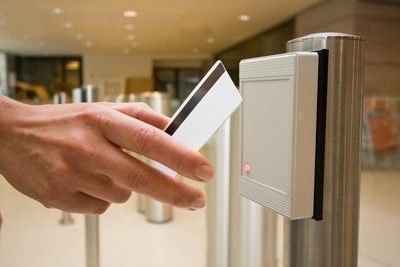
Biometric (Physical attribute) Access Control systems.
Biometric Access Control is a system that holds the door for intruders and prevents them from accessing the resources by verifying them as unauthorized persons on the basis of biometrics authentication. In Biometric Access Control system, biometric authentication refers to the recognition of human beings by their physical uniqueness.
Biometric Access Control system works on substantiation. Biometric Access Control system scans the person and matches his/her biometric data with the previously stored information in the database before he/she can access the secured zone or resources. If the compared information matches, the Biometric Access Control system allows the person to access the resources.
The most common Biometric Access Control Systems include
Fingerprint Recognition Access Control
Fingerprint Recognition includes taking a fingerprint image of a person and records its features like arches, whorls, and loops along with the outlines of edges, minutiae and furrows. In fingerprint access control, the fingerprint system first reads the print of the finger and matches it against the digital print image that has already been taken and stored in database.
Face Recognition Access Control
Face recognition system is a one type of biometric computer application which can identify or verify a person from a digital image by comparing and analyzing patterns. These biometric systems are used in security systems. Present facial recognition systems work with face prints and these systems can recognize 80 nodal points on a human face. Nodal points are nothing but end points used to measure variables on a person’s face, which includes the length and width of the nose, cheekbone shape and the eye socket depth.
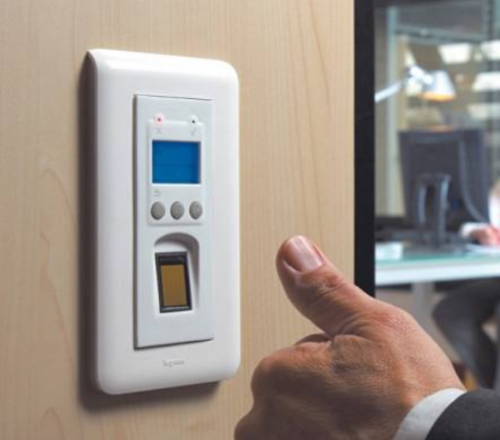
Fingerprint Biometric Access Control
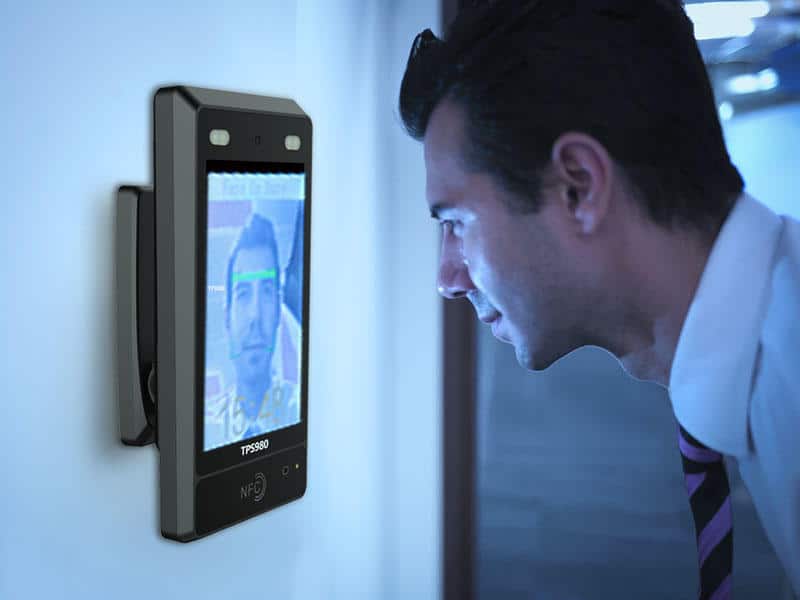
Facial Recognition Biometric Access Control
Turnstile Security Systems
Installing access control systems with security turnstiles is a great way to elevate security. This is because security turnstiles, security turnstile doors, gates, and security turnstile systems are designed to restrict access to one person at a time, and will only allow access to entrants with the correct credentials. A person entering a security turnstile presents credentials (like an ID card, key fob, etc.) to a reader attached to the turnstile so it can determine if the person is authorized to pass through the turnstile’s lane. If authorized, the turnstile will unlock and allow the person through, promptly locking immediately after the person has made the passage. These security turnstile systems provide one of the most secure and efficient entry security solutions available because they prevent tailgating and unauthorized entry autonomously.
Types of Security Turnstiles
- Waist High Security Turnstiles
- Waist High Security Gates
- Full Height Security Turnstiles
- Full Height Security Gates
- Optical Security Turnstiles
- Revolving Security Turnstile Doors
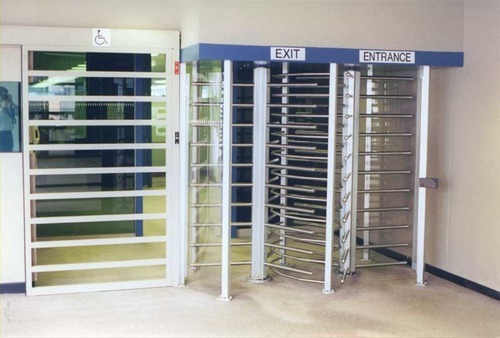
Turnstile Gate Security Systems